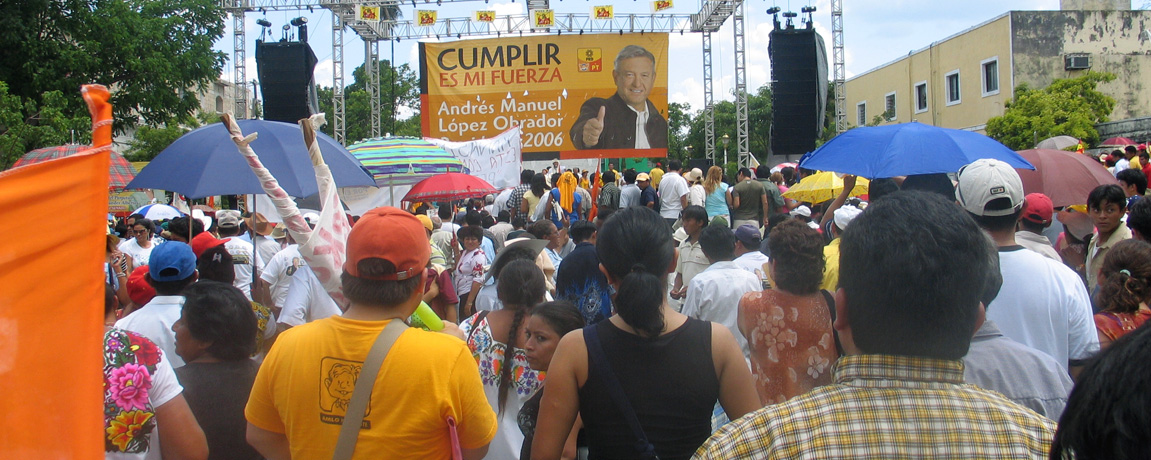News: Hurricanes, Fish and Food
2011: The Year of Tourism in Mexico
In 2010, Mexico took in $4 billion dollars in taxes from tourism and became not only the most visited country in Latin America, but also the 10th post popular vacation destination in the world. This was all thanks to 22 million foreign tourists who flew in, 7 million cruise passengers, 49 million tourists who came through the borders, and an 8% increase in domestic tourism. It has just been announced that the entire $4 billion dollars taken in by the government will be reinvested in the tourism industry, with the eventual goal of running that investment to $20 billion dollars over a period of just five years. The short-term goal is to take Mexico from the 10th most popular vacation destination in the world to number 5 as quickly as possible. It is estimated that this kind of activity will generate about one million good-paying, permanent jobs. Since 2011 is the Year of Tourism in Mexico – and since 2012 will probably make Yucatan the most visited place on Earth, we suggest that there has never been a better time to visit the State of Yucatan than right now. Our congratulations go to everyone in the tourism industry in Yucatan. This could not have happened without each and every one of you.
Spring Break Began With A Bang!
This past Monday, for the first time ever, three cruise ships arrived in Progreso on the same day – along with enough Mexican national tourists for the total number of visitors to top 20,000. Can you imagine 20,000 people arriving in a town of about 55,000 all in the same day? The business people were happy, so were the people who work in and around the port, and the taxi folks were enjoying good times as well. Our take-away from this is not only what a wonderful thing this is for the people of Progreso, but we suddenly realized that people from other places still have faith in Mexico and in Yucatan and are still making their wa here for Spring Break. We want all of Yucatan’s visitors, both foreign and national, to know how much this means to all of us who love this great state.
Free Rabies Vaccine Begins in Motul
Each Spring, under the sponsorship of the Public Health Department of the State of Yucatan, there is a free rabies vaccination program in the municipalities. This past week, the vaccinations began in Motul. Hunucma is next, with 2,000 doses expected to be provided for the pets of that municipality. What we really like about this program is that members of the Brigade are going door-to-door to give vaccinations for all who live outside of the Centro area of the municipal seats. This is not something that has been done before and is expected result in great success for the entire program. Our congratulations to Duffy and Fifi for being the first pets of Motul to get their free rabies vaccinations this year, as well as to the pets with the most interesting names in the municipality: Huero Cámara, "Choki Sarabia, Júnior Beethoven and Chicharito Hernández.
Mayan Mystery: Waiting for Forensics
Divers and researchers from the School of Anthropology at UADY have found human remains in a cenote in Yucatan. They are not divulging the location to avoid looting and possible damage by visitors. The bones of four adults, two children, and several deer and dogs all suggest that the dead died by violence. The bones have been sent to a forensic laboratory to determine cause of death. It has long been said, but not proven, that early Mayans practiced human sacrifice. Researchers hope that the final report on these bones will give us more information about the mystery of the Maya and human sacrifice.
Yucatan, Lent and Fish
If you are a seafood lover, imagine living on or near the coast, in a tropical country, where most of the population is Catholic – during Lent. The fishing boats go out at night, arrive back in the morning with a full load, and its is a case of “Let the Fish Fry Begin!” from Friday through the weekend. This year, it is especially important for people to eat fish in Yucatan because there were so many nortes this winter. During bad weather, the fishermen can’t fish and their incomes literally cease, except for the small stipends given to them by the government. But when Spring arrives, they have a chance to make up for lost time and begin to save money to send their children back to school in August. Always in a game of “catch-up,” the fishermen need the Lenten prescription for fish on Friday as much as people need to include fish in a healthy diet. We are pleased to hear that 100% of all fish that is currently being caught in Yucatan are being bought as quickly as they hit the markets.
2011 Hurricane Predictions
NOAA has released its list of potential tropical storms and hurricanes for the Atlantic Ocean and Caribbean Sea. These events include: 8 tropical storms, 4 Category 1 or 2 hurricanes and 5 Category 3, 4, or 5 hurricanes. These so-called predictions mean that there is a possibility that one or more of these events might take place, not that any of them are guaranteed to take place. We have often seen dire predictions of major hurricanes and then not a cloud in the sky over Yucatan. The best thing to do is prepare for the worst, now – before hurricane season arrives – and then have a wonderful summer with that responsibility having been met. In order to plan ahead, you will need to keep an eye on Yucatan’s Civil Protection website. We also recommend the voice of experience – Louisiana’s Get a Game Plan.org.
Yucatan: In Case of Hurricane or Other Disaster
Major hurricanes are few and far between in Yucatan. In fact, these serious weather events are at least a decade apart, maybe more. But that doesn’t mean that Yucatan is lax about preparation. Far from it. Marina Plan 2011 has just been published. By the Ninth Naval Zone of the Marina-Armada of Mexico and the Yucatan State Council of Civil Protection. This plan includes: groups of experts to identify, register and assess damage, and coordination between Civil Protection units, volunteer groups, government departments, and other units on the Task Force for prevention, rescue and recovery. It will be these last groups that evacuate people from endangered areas, update the location and capacity of shelters, make arrangements for transportation, identify evacuation routes, coordinate evacuations, and integrate air safety and security groups. They will also take custody of affected areas, perform security operations, monitor affected areas to prevent theft and looting. They will receive and classify patients and, if necessary, refer them to specialty hospitals. They will perform fumigation services, where necessary, as well as incinerate dead animals to maintain air and water quality. If there are deaths, they will make identifications, bury the dead, and maintain control of communication with the authorities. They will keep portable computer equipment ready for use and assist in keeping emergency channels operational on a 24 hour basis until the emergency is over. They have several pairs of search and rescue dogs, as well as the ability to set up soup kitchens, restrooms and showers. The Armada also has additional response teams capable of performing search and rescue operations at sea, as well as an additional number of temporary shelter facilities. If necessary, as many additional military and naval zones will come to help as are needed. In addition, CFE swings into action, whenever there is a disaster in Mexico, and sends as many trucks and employees as necessary to restore electricity as soon as possible. We think that pretty much has us covered in case of any kind of environmental emergency and we are thankful to have the Ninth Naval Zone headquartered in Yucalpeten, as well as Yucatan’s own Civil Protection to protect us should we ever find ourselves in the midst of any kind of disaster.
Rotisserie Chicken in Yucatan
When you move to Yucatan, one of the first things you will learn is where the path of least resistance really leads – and that just happens to be to the nearest rotisserie chicken. While you spend your time and energy on going, doing, seeing and participating in your new life, someone still has to cook – or do they? Not really. Not you, anyway. Places to purchase rotisserie chickens abound all over Yucatan. Your fully cooked rotisserie chicken order will include a whole chicken, plus rice or spaghetti and/or a black bean side dish, and a sauce and/or onion or bean soup, plus a stack of corn tortillas – all for between $50 and $60 pesos ($4.18 - $5.01 USD). You can eat the chicken as you bought it, or use it as the base for a different recipe. Either way, the cook in your house is the clear winner. Today, you can actually buy a half a rotisserie chicken, a quarter of a rotisserie chicken, or even just one piece of rotisserie chicken. Whichever you choose, you can be certain that you too will take the path of least resistance (to the nearest rotisserie chicken), right along with the rest of us. Sales usually begin around 10:00 AM and delis are reporting that business is brisk.
Los Angeles: Chichen Itza Restaurant
If you’ve been looking for popular Yucateco recipes, you really need to take a look at the menu on the Los Angeles Chichen Itza Restaurant’s new website. We love their menu and their prices – but what we really love are the pictures that come along with Exile Kiss’ blog Review of the Chichen Itza Restaurant. You won’t find any recipes on either site, but choose a picture of a dish you think you would like and google the recipe. Alter what you find to fit your own tastes and we think you’ll see that you can eat quite well in Yucatan.
Getting Ready for Special Olimpics
This past week, more than 500 children and young people participated in the State Special Education Sports Games 2011. The games are not only a way to identify those who will go forward and compete at the national level, but they are also a way to promote emotional and cultural integration for the participants. The children and young people who participated in these games came from 18 special education schools in 7 municipalities, plus one club in Conkal, along with Special Olimpics winners from years past. The children and youths of different abilities, in Yucatan, continue to amaze us. Their accomplishments are a direct reflection of a society that values all of its members and gives them the opportunity to become the best they can be.













Comments
Mary Lou Martin 14 years ago
I guess if you're wondering where your next meal is coming from it's a reason to celebrate.
Reply
Sally Willson 14 years ago
Can you imagine 20,000 people arriving in a town of about 55,000 all in the same day?
YES, I can. We have 10,000 to 15,000 cruise ship visitors each day for about five months here in Juneau - a city of 32,000 people. It impacts the entire life of the town.
One needs to know how many tourists will change the character of the town such that the former charm is gone on some days.
20,000 in one day is not a reason to celebrate but a reason to recognize the challenges associated with industrial grade tourism!
Reply
Ed 14 years ago
2011: The Year of Tourism in Mexico!
Thats Mexico, now break it down to Yucatan. The lack of flights in the Yucatan will cause Merida in particular, to loose valuable money.
Reply
(0 to 3 comments)